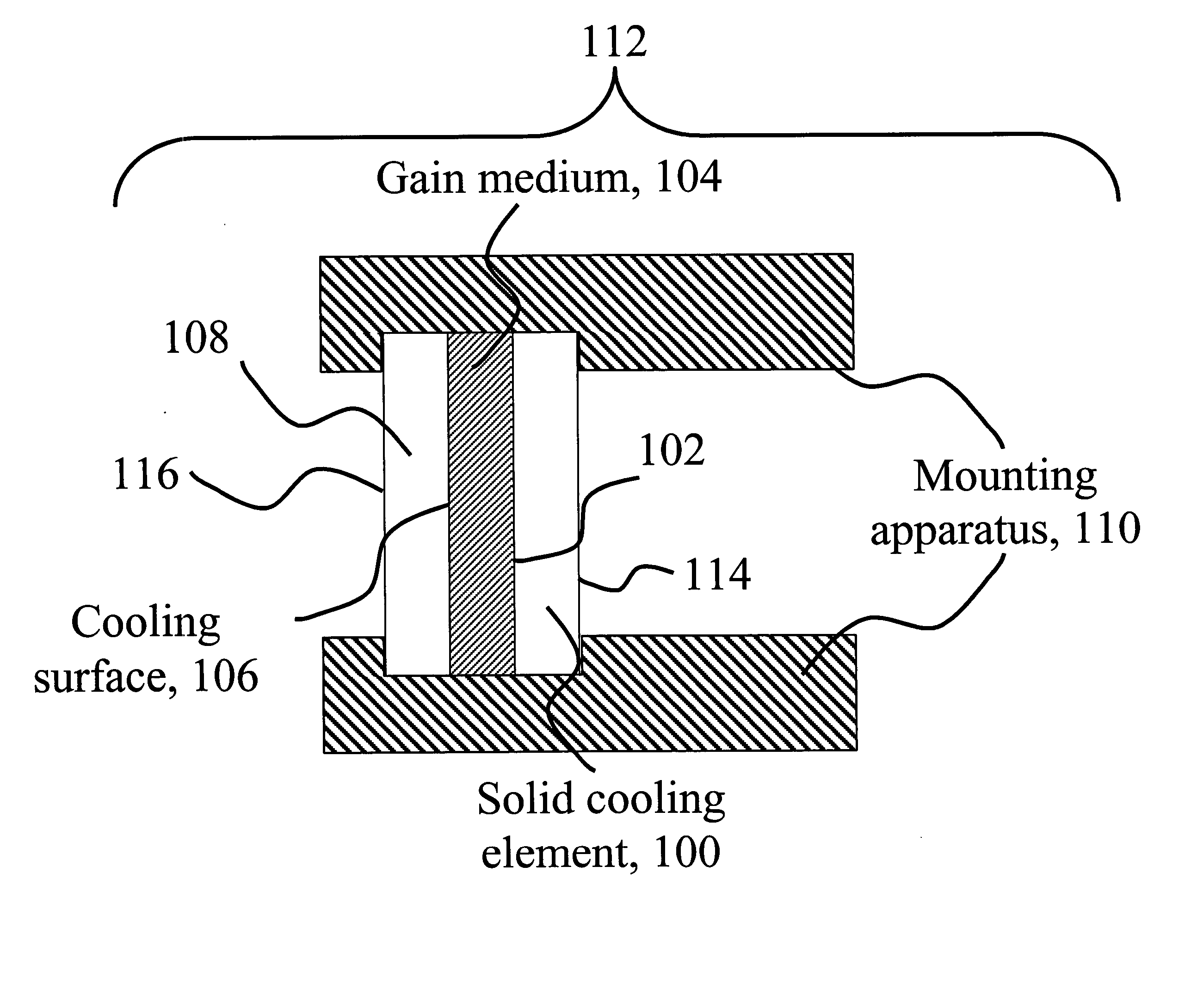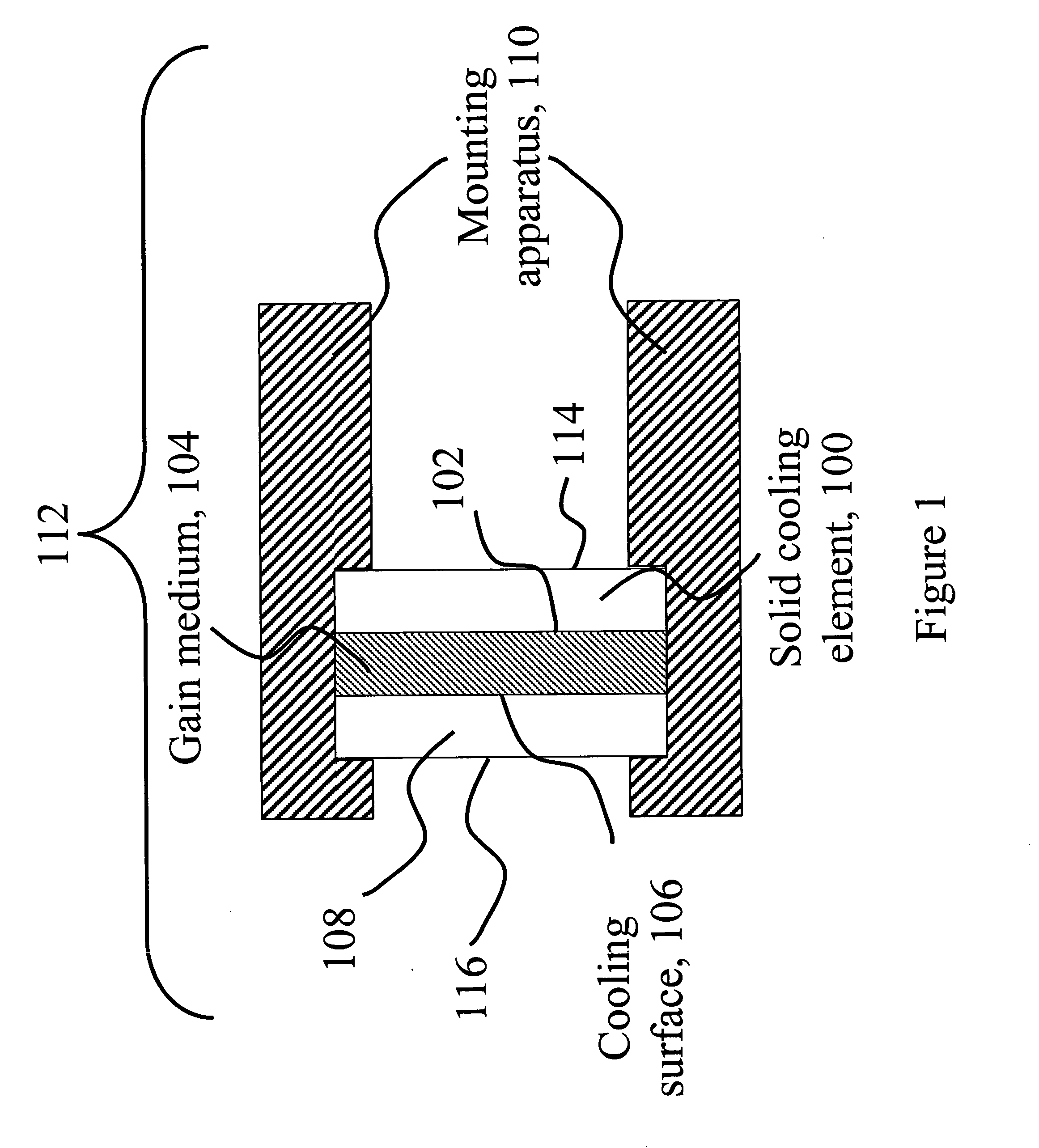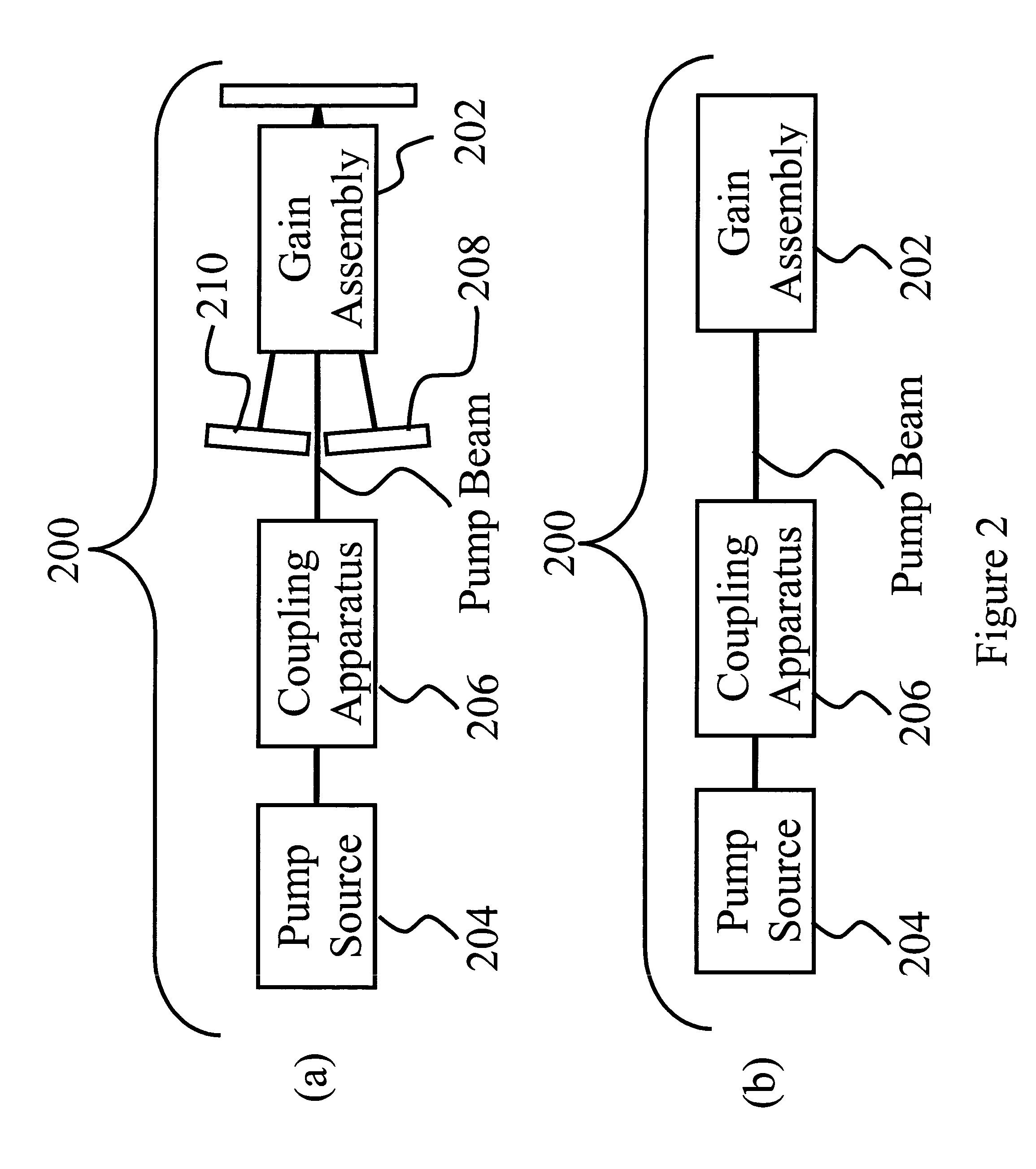Diamond cooled laser gain assembly
a laser gain and diamond technology, applied in lasers, laser cooling arrangements, laser details, etc., can solve the problems of diode-pumped output power, solid-state lasers ultimately limited by thermal and mechanical properties of gain medium, further restrictions on the performance of systems, degradation of output beam quality, etc., to achieve simplified dielectric coatings, good thermal conductivity, and small temperature rise in laser gain medium
- Summary
- Abstract
- Description
- Claims
- Application Information
AI Technical Summary
Benefits of technology
Problems solved by technology
Method used
Image
Examples
Embodiment Construction
[0024] As illustrated in FIG. 1, in one embodiment of the present invention, a gain assembly 112 comprises: at least a first solid cooling element 100 that is in physical contact with, but not bonded to, a cooling surface 102 of gain medium 104. Two cooling surfaces 102 and 106, and two solid cooling elements 100 and 108 are provided. Heat flow through the gain medium 104 can be substantially one-dimensional, in a direction substantially normal to the cooling surfaces 102 and 106. Solid cooling elements 100 and 108 are held in contact with gain medium 104 by mounting apparatus 110, by applying opposing forces to solid cooling elements 100 and 108 in a direction substantially normal to the cooling surfaces 102 and 106. In various embodiments, one or both of solid cooling elements 100 and 108 can be, sapphire, CVD diamond, single-crystal CVD diamond, a material having a thermal conductivity >100 Wm−1K−1, and the like. At least one of the solid cooling elements 100 and 108 can have a h...
PUM
 Login to View More
Login to View More Abstract
Description
Claims
Application Information
 Login to View More
Login to View More - R&D
- Intellectual Property
- Life Sciences
- Materials
- Tech Scout
- Unparalleled Data Quality
- Higher Quality Content
- 60% Fewer Hallucinations
Browse by: Latest US Patents, China's latest patents, Technical Efficacy Thesaurus, Application Domain, Technology Topic, Popular Technical Reports.
© 2025 PatSnap. All rights reserved.Legal|Privacy policy|Modern Slavery Act Transparency Statement|Sitemap|About US| Contact US: help@patsnap.com



